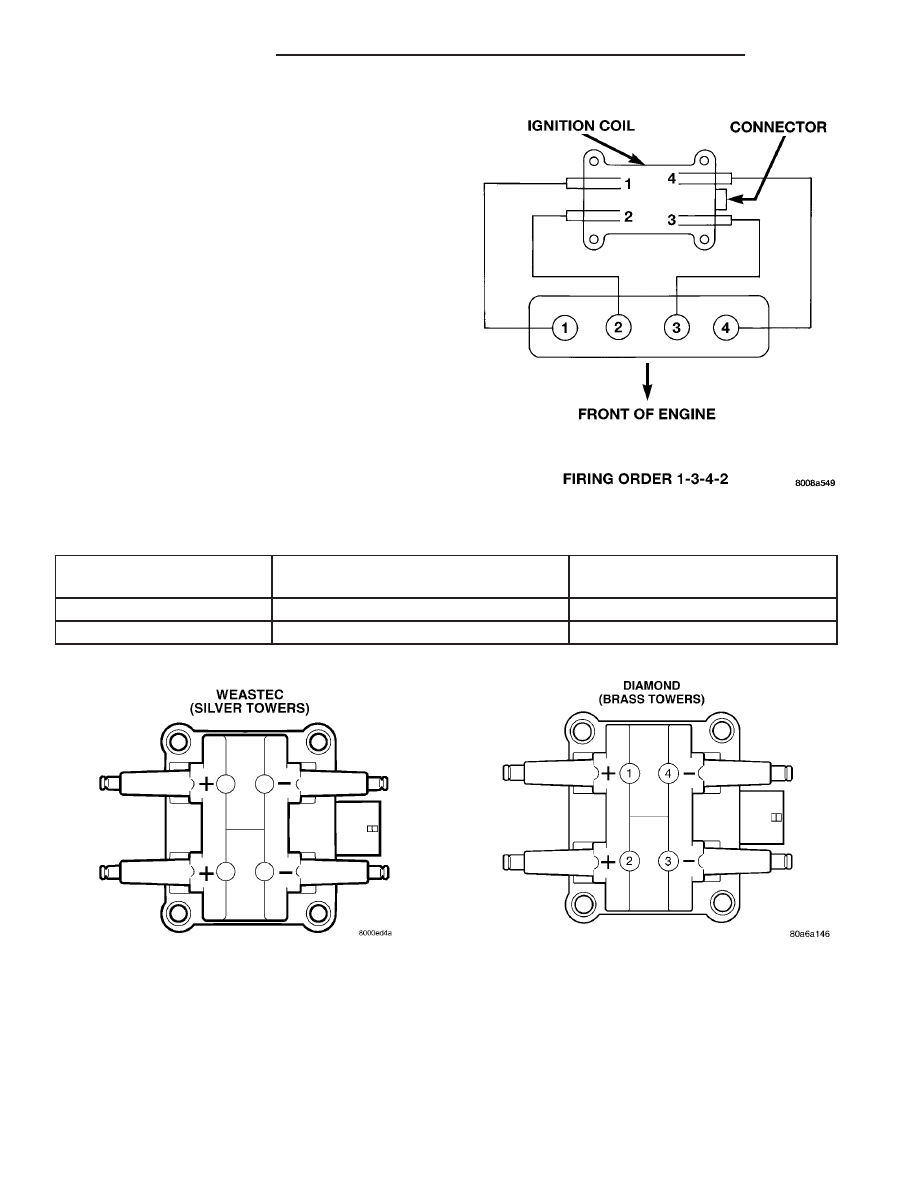Dodge Neon / Neon SRT-4. Manual - part 89

SPECIFICATIONS
FIRING ORDER - 2.0/2.4/2.4 TURBO
IGNITION COIL
Coil Manufacture
Primary Resistance at 21°C-27°C
(70°F-80°F)
Secondary Resistance at 21°C-27°C
(70°F-80°F)
Weastec (Steel Towers)
0.45 to 0.65 Ohms
11,500 to 13,500 Ohms
Diamond (Brass Towers)
0.53 to 0.65 Ohms
10,900 to 14,700 Ohms
Coil Polarity
Coil Polarity
8I - 2
IGNITION CONTROL
PL/SRT-4
IGNITION CONTROL (Continued)